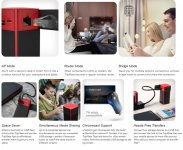DruidZ
Active Member
I have a Linksys router with DD-WRT installed and I am trying to use it to connect to the campground wifi and server my internal network including the wired ethernet part. I have searched everywhere for simple instructions but I can't seem to make it work. Has anyone made this work and can you describe the setup using these terms:
I have a separate DHCP server on my network. If I have to I can move it to the Linksys to get the proper DNS server distributed.
Basically I want a fixed setup inside the toad including the wired desktops and printer and connect to whatever campground wifi I can find from the router. Sometimes I will even tether the router to one of our phones if the external stuff is too slow
Can anyone suggest how to do this?
- Campground SSID is CG
- Campground password is CGPW
- My router is LR
- My internal network is 192.168.215.0/24
I have a separate DHCP server on my network. If I have to I can move it to the Linksys to get the proper DNS server distributed.
Basically I want a fixed setup inside the toad including the wired desktops and printer and connect to whatever campground wifi I can find from the router. Sometimes I will even tether the router to one of our phones if the external stuff is too slow
Can anyone suggest how to do this?

